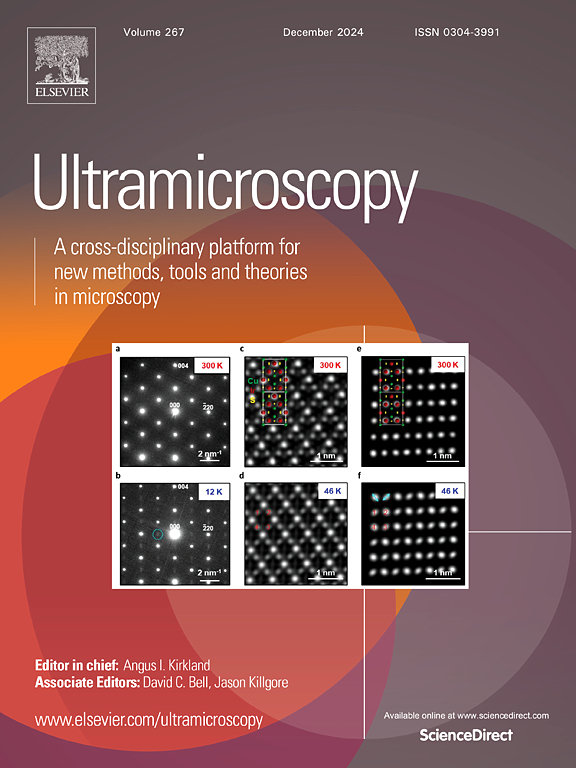结合电子束模拟和机器学习的顶视图SEM-EDX铝薄膜厚度测量新技术
IF 2
3区 工程技术
Q2 MICROSCOPY
引用次数: 0
摘要
提出了一种利用顶视图扫描电镜和EDX测量铝薄膜厚度的新方法。电子束模拟用作参考训练数据,输入机器学习算法,该算法经过训练后可以根据三种加速电压下的EDX特征x射线计数测量结果预测铝薄膜的厚度。与以往依赖参考纯材料样品或衬底信号进行比较的技术不同,该方法使用不同加速电压下EDX x射线信号的比率进行比较。由于不需要衬底信号,铝薄膜下面的层可以是任何材料。对于大多数数据点,训练数据和测试数据的预测精度较高,对于厚度大于40 nm的数据,平均预测精度低于10%,但仍存在较大的误差。对入射电子束的横向色散的研究表明,横向色散随加速电压的增加而增加。由于测量更高的厚度需要更高的加速电压,因此可以精确测量的最小特征尺寸随着厚度的增加而增加。限制包括要求铝为顶层,要求光束电流的一致性,在低加速电压值下的低信号和过度噪声,以及如果最初不知道薄膜厚度的近似范围,则需要在不同电压下进行多次测量。本文章由计算机程序翻译,如有差异,请以英文原文为准。
Novel technique for aluminum thin film thickness measurement using top view SEM-EDX in conjunction with electron beam simulation and machine learning
A novel method for determining aluminum thin film thickness using top view SEM and EDX measurements has been developed. Electron beam simulations are used as the reference training data to feed into a machine learning algorithm, which once trained can predict the thickness of the aluminum thin film from EDX characteristic x-ray count measurements for a set of three accelerating voltages. Unlike previous techniques which rely on a reference pure material sample or substrate signal to compare to, this method compares instead using ratios of EDX x-ray signals using different accelerating voltages. Since no substrate signal is required, the layer(s) below the aluminum thin film may be any material. High prediction accuracy was obtained for the training and test data for most data points, below 10 % for thicknesses above 40 nm on average, though some large errors remained. Investigation of the lateral dispersion of the incident electron beams showed that lateral dispersion increased with accelerating voltage. Since measurement of higher thicknesses requires higher accelerating voltages, the minimum feature size that can be accurately measured increases for higher thicknesses. Limitations include the requirement for aluminum to be the top layer, the requirement for consistency of beam current, low signal and excessive noise at low values of accelerating voltage, and the need to make many measurements at different voltages if the approximate range of the thin film thickness is not initially known.
求助全文
通过发布文献求助,成功后即可免费获取论文全文。
去求助
来源期刊

Ultramicroscopy
工程技术-显微镜技术
CiteScore
4.60
自引率
13.60%
发文量
117
审稿时长
5.3 months
期刊介绍:
Ultramicroscopy is an established journal that provides a forum for the publication of original research papers, invited reviews and rapid communications. The scope of Ultramicroscopy is to describe advances in instrumentation, methods and theory related to all modes of microscopical imaging, diffraction and spectroscopy in the life and physical sciences.
 求助内容:
求助内容: 应助结果提醒方式:
应助结果提醒方式:


